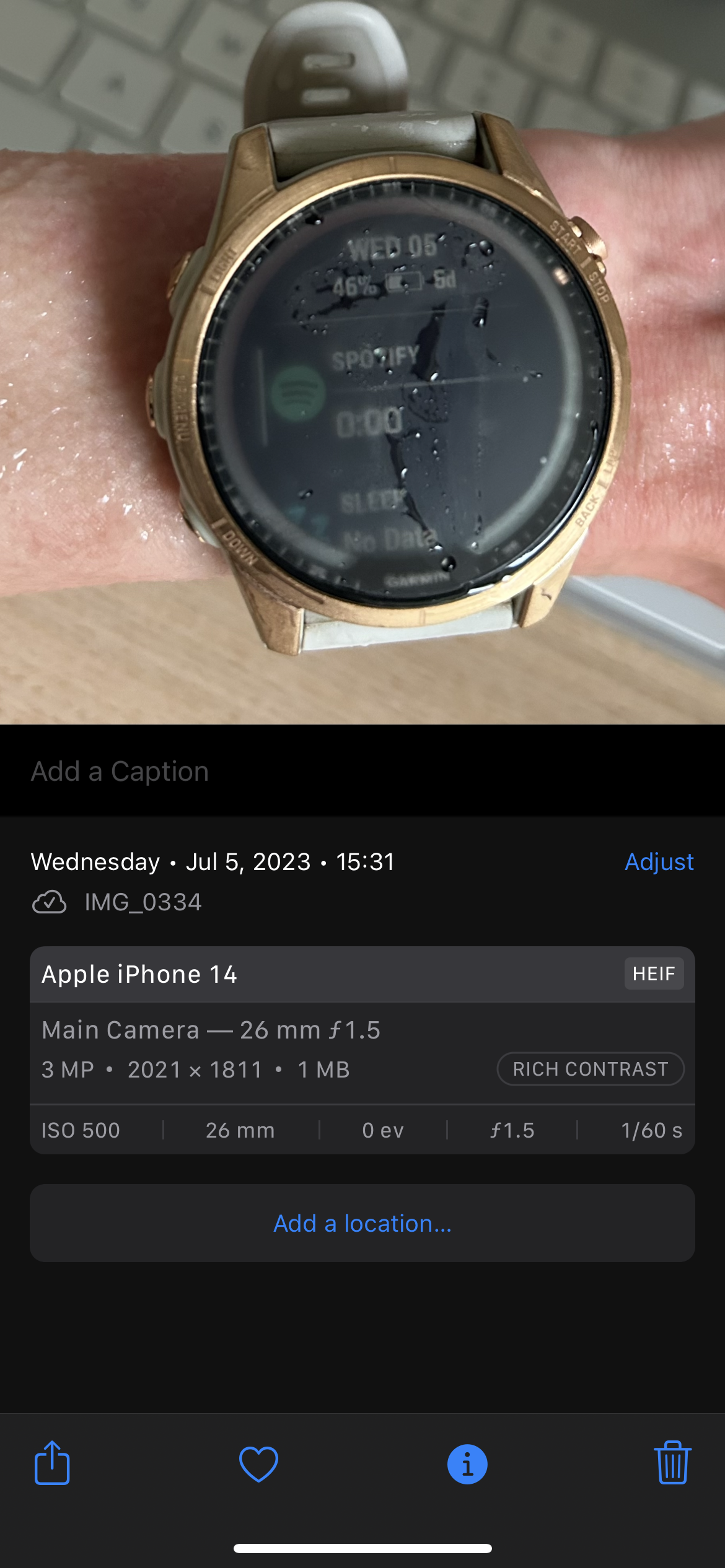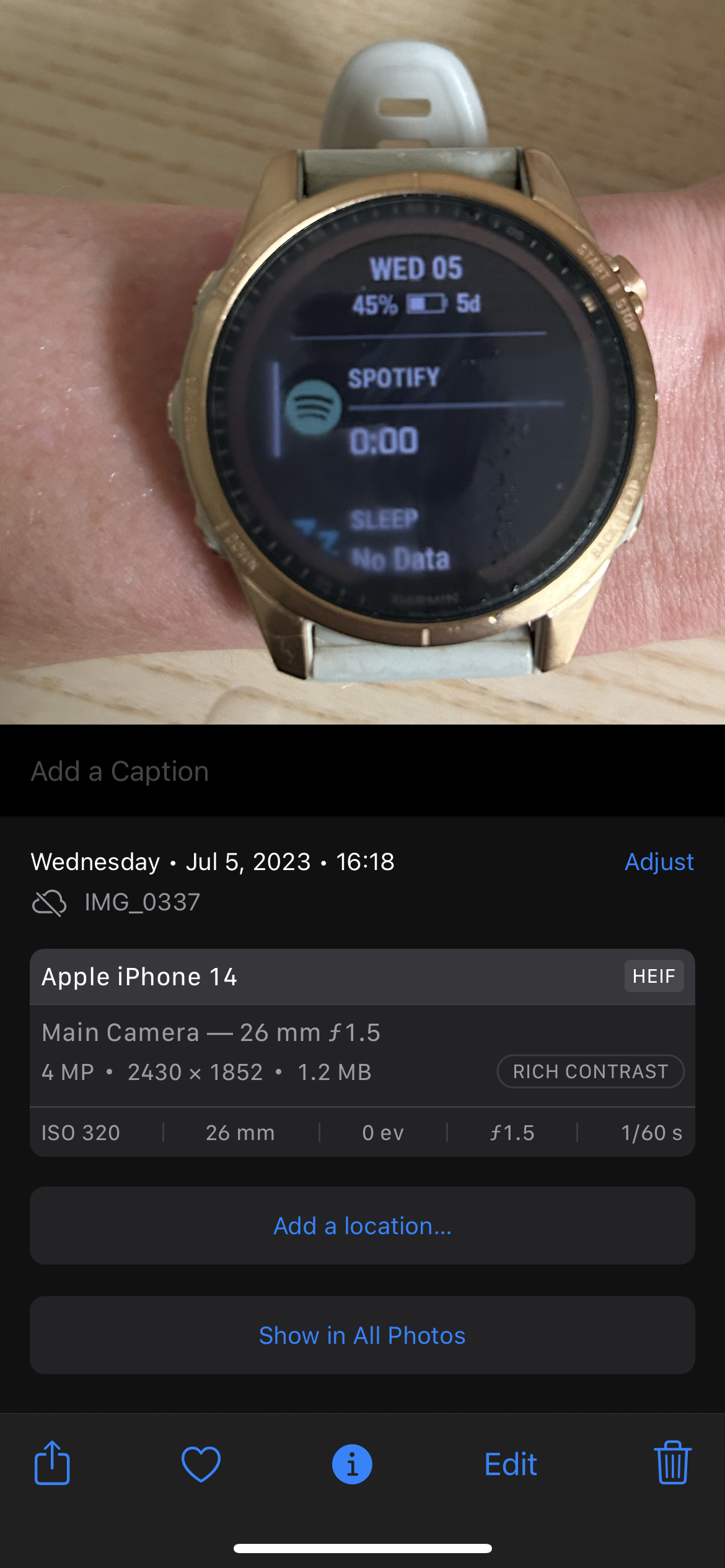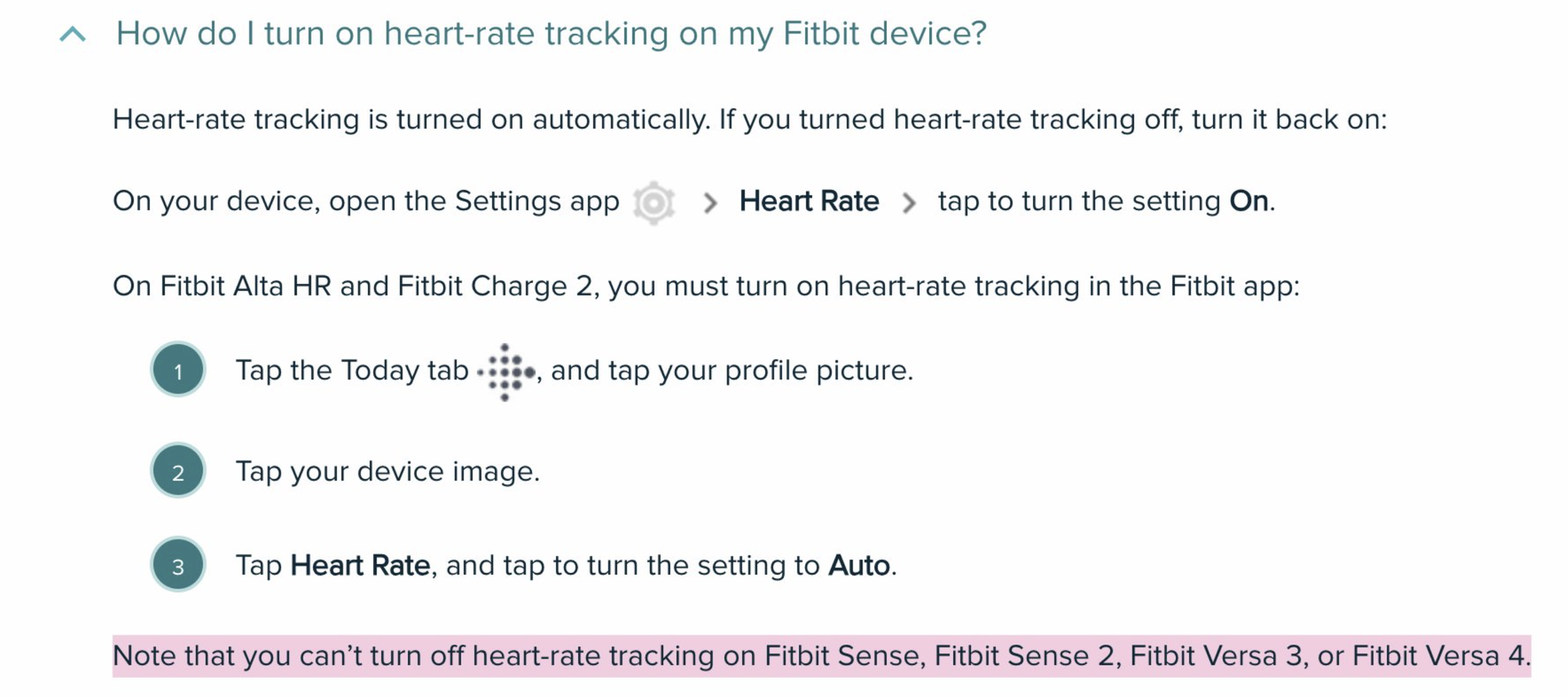She Was Never There
My research suggests that the police witness opinion about Nicola's Fitbit given at the inquest was incorrect and must be reexamined.

She was never there: These are the words I've probably seen said the most about Nicola Bulley over the past five and a half months.
She was never there—in the River Wyre—until she was. It's my hunch too, and the hunch has grown into something much stronger over the past nine days. Following the inquest, I took what I've learned in my professional and personal life—many years working for technology and fitness companies, and 25 years as a competitive runner with a drawer full of once-beloved heart rate monitors, watches and wearables—and applied it to the pixelated picture we've been given by the powers that be. My focus is on only one aspect of this case: the Fitbit. All else I leave aside for hard-working minds like Outside the Cave, Superchuffer and Mind Juice to consider (and please: Eddy, if you're still willing...)
Yesterday I completed a test on my Garmin Fenix 7S watch, which has a battery life of 11 days. It's clearly not a Fitbit Versa 4, the device Nikki had, but the test is designed to show that even a watch priced nearly three times higher than the Versa 4—roughly £500 vs £179 (around $1000 US vs $300)—with a battery life that is almost twice as long, performs so poorly in cold water as to unequivocally prove our point: Nicola was not in the river during the search.
This latest test probably seems absurd to some, but if you've seen my Twitter you know I've been fighting for Nikki, alongside some truly brilliant minds across Twitter, YouTube, Substack and Facebook, every day since late January. There's a lot I'd do for this beautiful woman and fellow mother I never had the privilege of meeting, including going out and buying a Fitbit Versa 4 so I can test apples to apples. That might be next, but from what I've discovered, I don't know that it's necessary.
For now: Yesterday afternoon, I placed the Garmin on my wrist, and made sure all of its battery-draining settings, such as the always-on screen setting, were off. As described on Twitter, I'd already been testing the Garmin off my wrist, in a bowl of 4C water that had been in the fridge since last Saturday night. I'd observed that while in the fridge, the Garmin, not tracking heart rate, was losing 12% of its battery life per day. In normal circumstances, sitting on my wrist tracking my heart rate 24/7, it only loses 9% per day, sometimes less. So, I've estimated that it would last just over 8 days in the 4C water. In other words, it would perform at about 72% of its normal capacity in cold water while not tracking heart rate, which would drain the battery life even further.
But since we know Nikki's device was tracking heart rate—or attempting to—until February 4, I had to shift gears. What would happen in the cold water if the Garmin was tracking heart rate?
(A quick tech recap: On both the Fitbit and Garmin, as I detailed on Twitter, heart rate tracking is done through LED sensors under the watch face. The lights shine against the wrist and detect pulse rate from the movement of our capillaries. It is not a perfect technology, and Fitbits are known to pick up false heart rate readings off-wrist, for example in gym bags or on countertops, and on deceased people not in water. More on that later.)
I submerged my hand and Garmin-wearing wrist into a bucket of 4-degree Celsius water and left it in there for an hour, adding an ice pack to the bottom halfway through to make sure the water temperature held more or less steady. My heart rate was tracked consistently throughout, with no breaks, though the heart rate was probably not as accurate as it would be in room-temperature non-liquid conditions.
This first leg of the experiment left my arm numb, but it left the rest of me numb too. I was actually in denial. This Garmin, which I've only had for nine months, was now losing 1.5% of its battery per hour. Meaning 36% per day. Meaning that it would last 3 days in 4C water on a living wrist. I then put the watch back in the fridge for a couple of hours. It held a charge a bit better during that time, going back to losing roughly 0.5% per hour (12% per day).
I thought I'd better do some more on-wrist bucket time to see if this 36%-battery-loss-per-day stat could really be true. I submerged my arm again for roughly an hour and a half, 2:45PM to 4:18PM, not counting a bathroom break.
Here's a snapshot of what happened between 3:31PM and 4:18PM, with timestamps.
46% battery life at 3:31PM:

45% battery life at 4:18PM:

And some notes I took about the battery drop between 2:45PM and 4:17PM, which didn't happen at a completely steady rate:
2:45pm: battery 48%
3:02pm: battery 47%
3:30pm: battery 46%
4:17pm: battery 45%
These four stats above actually work out to a 2% drop per hour (a staggering 48% drop per day), but since it didn't drop as quickly from 3:30-4:17PM, I decided to average it out to 1.5%. Again, still a loss of 36% per day.
So if my watch, with a consistent 11-day battery life while tracking HR, would only last a little over 3 days on a wrist in 4C water, what does that say about Nikki's, a device with an official battery life of "6+ days," according to Fitbit?
The Garmin's battery is performing at 27% of its typical power on my wrist while in 4C water. Given that stat, I'd estimate that Nikki's Fitbit, if it lasted 8 days normally (that's being generous), would perform similarly, let's say 27% optimal power as well, even though it has an inferior lithium polymer battery. Given that, the battery would last about two days in the River Wyre.
As I mentioned in my original Twitter thread, the Garmin's lithium ion battery is larger and lasts longer than the Fitbit's lithium polymer battery, a big reason for the difference in price point (and same goes for Apple Watch, Coros, the latest model of Whoop, et al: lithium ion, and longer battery life). This is a technological advantage of lithium ion that's widely known by watch and wearable companies (and others).
And here's another really important thing to note: My body temperature, combined with the temperature of the water, gave a temperature reading that fluctuated between 11C and 12C during the 4C bucket immersion. Here's a picture I took, which shows 11C and, before that, the room temperature reading in the hours yesterday morning when I'd taken the watch out of the fridge and briefly put it on my wrist to try to warm it up for a couple of hours (because the buttons and screen had frozen, and I needed to view them to check the battery level):

So imagine how the battery would do on a person who was no longer living, where the temperature of the Fitbit would, in a matter of hours, drift down to match the temperature of the Wyre (a purported 3.6 degrees C on January 27). Would the Fitbit even last two days? It might only last one day.
What can we glean from this, besides that she was not in the river during the search? How do we understand this in the wider context of things? Well, again, I'm only going to focus on the Fitbit. There are just too many other confusing, misleading and flat-out unbelievable things about this case for me to consider it all without my head exploding. So first let's talk about what Fitbit the company says.
Fitbit has given conflicting statements about the Versa 4. They have told me, via email, that this particular device has a "Water Lock" feature that would disable heart rate in water. However, the manual and other comments from Fitbit suggest otherwise (thank you to mroshe13 on Twitter), as do their own statements: They told me two days ago that "It's pretty common that customers call us" about heart rate tracking inadvertently staying on in water (see answer to question 3):

They also say right on their website that it's not possible to disable heart rate tracking on the Versa 4:

None of this actually matters, because we know that Nikki's Versa 4 was trying to track heart rate until February 4, because it obtained phantom readings until that date. We have to work backward and figure out how that is, and why.
We know that Fitbits have shown intermittent heart rate spikes when off users' wrists (not in water). Here is an example of data from a man whose Charge 4 recorded high heart rate spikes in his gym bag (Source: Fitbit Community forums):

We know that Fitbits have given heart rate readings on deceased users, including several hours after their official time of death, and when their bodies were touched (e.g. hugged) or moved. Here are a couple of examples from the Fitbit Community forums (the whole thread can be viewed here):


We know that Nikki's heart rate had a spike of around 100 BPM at 9:22am on January 27 (Source: Daily Mail timeline). This was attributed to "cold-water shock" at the inquest as we well know, but especially given the research above, could just as easily (in my opinion much more easily) be attributed to being startled, assaulted, and/or abducted.

We know there were "no further steps taken" on the Fitbit after 9:30am on January 27, at least according to what DC Keith Greenhalgh said at the inquest. But this does not mean she went in the water, especially in light of the battery research above. It means, in my belief, that she was incapacitated and abducted, and/or that the device was removed from her wrist around that time (remembering that Fitbits can pick up false heart rates when not on wrists).
We know that her heart rate showed further spikes after 9:33am on January 27, as stated by Coroner Adeley in his closing statement:

We know from Chris of Outside the Cave's reporting from the inquest that Nikki's Fitbit gave heart rate readings until 11:48am on January 27. These were, according to Chris's notes, given a "confidence level of 3." Confidence level is a propriety measure Fitbit uses for biometric data recordings. It is written into the raw data files, which can be extracted/downloaded from the device. Confidence level ranges from 0, least confident, to 3, most confident. In my estimation from the reading I've done on this feature, these ratings are likely based on algorithms that try to estimate what is "normal" for that user based on their historical data. From Chris's "Part 2" post:

We know that (likely false) heart rate readings were picked up after 11:48am on January 27 and until February 4. These were given a confidence level lower than 3 (I believe zero for all, but unconfirmed). Greenhalgh said those readings until February 4 "could be" due to water passing between the watch and her wrist (Source: LancsLive):

We know that Greenhalgh was able to obtain nine days of detailed data, down to fifteen-minute increments, from Nikki's Fitbit after her body was found on February 19. I question how this was possible, as the manual claims that the Versa 4 can only store 7 days' worth of detailed data on the device itself. From the manual:

Recall that friend Emma told us in the media on February 4 that the device "hadn't been synced since Tuesday" (January 24), so my only conclusion here is that 1) Google (the owner of Fitbit) was somehow able to get Lancashire Police more than seven days of data off the device or, more sinisterly: 2) the Fitbit was synced to Nikki's phone again sometime between January 28 and February 19.
We know that the Fitbit was not mentioned as part of Nicola's physical description until Friday, February 3, one week into the search, at the press conference led by Supt Sally Riley. Perhaps it was mentioned amongst searchers, professional or friends, but it did not appear in the police's missing posters that went up on January 27, and it was not mentioned anywhere by the media, or on social media, until February 3 after the press conference (believe me, I looked). People wondered across social media if she might have been wearing a smartwatch of some kind, but no one had any confirmation of a "pale blue Fitbit" until February 3. On February 3 and thereafter, tweets about the Fitbit start to appear.
January 27 missing poster (note the language of "last seen today" and no mention of Fitbit):

Here is a physical description that made the rounds in the media prior to the February 3 press conference (Source: Scottish Sun), also with no mention of a Fitbit:
We know that the last recorded data on her Fitbit was on Saturday, February 4, the day that a friend first made statements to the media about the Fitbit. Emma told The Sun:
The Fitbit had not been synced since Tuesday. The police are trying other ways to try to get information from it.
When asked for comment in the same article, Lancashire Police said they have "no info to give out on the Fitbit."
And that day, it stops recording data. Either the battery died, or it was turned off.
We know that on February 5, a day later, Fitbit officially made a comment in the media about helping with data wherever legally possible (Source: Express):

We know that the Fitbit was found with Nicola's body on February 19. This was of course officially confirmed at the inquest. Oddly, the family friend's preferred media source, Grizzly True Crime, was told on March 13 when they provided her a 10-second Ring camera clip of January 27, that Nicola's Mercedes keys were "found in her coat pocket" with her body. The friend did not mention the Fitbit. Why not though? It's such a crucial source of data. Later, I believe in April or May, friend Heather confirmed via Facebook groups that the Fitbit had also been found on Nicola. And we heard nothing more until the inquest.
For now, I don't think I need to say anything more. Hopefully the research speaks for itself. But if anyone has further questions about any aspect of the Fitbit, I'd be more than happy to answer them in comments here, on Twitter, or via email.
Twitter: mickeylanana
Email: mickeylanier@proton.me
Thanks for reading, and please share if you found this helpful. Just link back to the original when citing or sharing so people can read everything in context.
